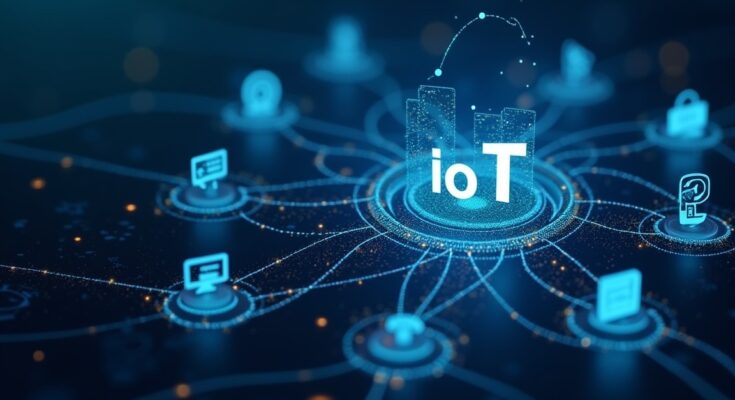Building a successful IoT product requires more than connecting devices — it takes strategic planning, technical excellence, and cross-platform integration. That’s why working with a professional IoT app development company is essential. These companies don’t just build apps — they deliver smart, scalable ecosystems that turn connected devices into real-world value.
In this article, we’ll explore the best practices that top IoT development teams follow to ensure performance, security, and long-term scalability — and how they help businesses go from prototype to production-ready platforms.
1. End-to-End Product Thinking
Top companies don’t approach IoT as isolated software development. Instead, they think in terms of ecosystems. From firmware and sensors to mobile apps and cloud infrastructure, every layer must work together. This includes:
- Hardware-software communication protocols (e.g., BLE, Zigbee)
- Intuitive mobile/web interfaces for end users
- Real-time dashboards and admin portals for operations
- Scalable cloud backend with analytics and storage
By thinking holistically, leading developers ensure your product is not just functional, but usable and future-ready.
2. Strong Hardware Integration Capabilities
A core competency of every experienced IoT app development company is seamless integration with hardware. Whether it’s wearable fitness devices, industrial machinery, or smart home sensors, best-in-class teams support:
- Custom APIs for device communication
- Bluetooth Low Energy (BLE), FTMS, ANT+, Zigbee, and cellular protocols
- OTA firmware updates
- Low-power optimization and connectivity resilience
This ensures smooth data flow, battery efficiency, and minimal latency in real-world usage.
3. Focus on Real-Time Data and Visualizations
In IoT, raw data is only as good as its presentation. That’s why top teams implement custom dashboards and real-time monitoring tools with:
- Sensor status and health monitoring
- Alert systems and predictive maintenance
- Fleet or asset tracking
- Role-based access for teams or clients
Modern stacks like GraphCMS, React Admin, and Firebase allow for scalable, responsive interfaces that serve both users and operators.
4. Cloud-First, Edge-Ready Infrastructure
Best practices include designing with scalability and uptime in mind. Leading development companies choose the right cloud provider (AWS, Azure, GCP) based on project needs and support:
- Device provisioning and management
- Secure data sync with encryption
- Offline functionality through edge computing
- Integration with AI/ML tools for data-driven insights
Smart infrastructure choices reduce costs and future-proof the product.
5. Security by Design
IoT products handle sensitive data — from health metrics to home security. That’s why security is embedded from day one. Top developers follow:
- TLS encryption and OAuth 2.0 for secure communication
- End-to-end data protection at rest and in transit
- MFA and user-level permission controls
- GDPR, HIPAA, or industry-specific compliance
Proactive security ensures user trust and regulatory success.
6. Rapid Prototyping and Iteration
Great IoT teams know that early feedback is gold. They adopt agile workflows and fast prototyping for:
- Sensor validation and MVP builds
- Hardware-software interface testing
- Early usability testing with real users
- Continuous delivery and post-launch iterations
This approach reduces risk and helps pivot early if needed.
7. Domain-Specific Experience
The best results often come from companies that have worked across verticals like:
- Healthcare & MedTech: vitals tracking, remote patient monitoring
- Fitness & Wellness: BLE wearables, equipment integration
- Logistics & Transportation: GPS fleet tracking, real-time alerts
- Smart Home: device grouping, remote access, automation
- Agriculture: soil monitoring, smart irrigation, climate analysis
Each industry presents unique latency, power, and regulatory challenges — top firms know how to handle them.
8. Clean, Scalable Codebases
Whether it’s a mobile app or a cloud function, clean code matters. Leading companies use modern frameworks like React Native, TypeScript, Swift, and Node.js to build modular, reusable, and well-documented codebases — making future updates easier and reducing technical debt.
Final Thoughts
IoT app development isn’t just another software project — it’s a multi-layered challenge that requires deep expertise across hardware, networks, and cloud. Choosing the right IoT app development company ensures that your product is not only functional but secure, scalable, and aligned with your business goals.
At Stormotion, we follow these best practices to help startups and enterprises launch smart IoT solutions — from BLE fitness apps to real-time healthcare platforms and logistics dashboards.
Ready to turn your connected product idea into reality? Let’s talk.



